The Best Closed Back Headphones for Recording (Under $200)
This article is also available as a video and podcast episode.

Introduction: What Makes for a Good Pair of Recording Headphones?
In recent roundups, we’ve covered the best open back headphones for mixing and mastering at any price, and the best headphones for mixing under $400. Today we tackle a new subject: The best closed back headphones for recording, focusing in on models that cost less than $200.
What makes a pair of headphones ideal for tracking in the recording studio? There are 5 criteria I’ll be basing these choices on for you.
Unlike with picking open back headphones for mixing, sound quality is not the single most important feature when it comes to selecting closed-back headphones for recording purposes.
Instead, tracking headphones definitely need “good-enough” sound quality, but coupled with a suitable degree of isolation, great durability, comfort and adjustability—as well an affordable price that allows a studio owner to buy multiple pairs. (…Or to save some money for nicer open back headphones or studio monitors for making final mix decisions.)
Before we get into ranking my top picks, which includes brands like ADAM Audio, Audio-Technica, Sennheiser, Austrian Audio, Beyerdynamic, Audeze, Steven Slate, AKG, Blue, Sony, Shure, Ollo, and more, I want to give you a quick overview of how I’ll be weighting each of these criteria:
1. Sound Quality (Importance: Medium)
While sound quality isn’t THE most important factor for closed-back recording headphones (like it is for open back mixing headphones), it is still a very important one.
Perhaps most importantly, the sound of good recording headphones should inspire confidence in the person performing the part! However, good tracking should do this without going overboard in “hyping” the sound up to the point where the listener can’t make good determinations about what’s happening in the mix.
Good recording headphones shouldn’t leave out any important details that a musician might want to hear. This means they should extend reasonably well into the lows and highs, without a big scooped “hole in the middle” of the frequency response.
In short: recording headphones should perform “well enough” to allow players to make reasonable guesses about the right direction for their tone to go. But if a secondary reference check is needed to dial in the ideal final tone, that is to be expected.
Having an accurate-enough frequency response to make final mix decisions on would be a nice feature to have in tracking headphones, for sure. But realistically, this is very difficult to achieve in in closed back headphones—and even more so in closed back headphones under $200!
If you’re a solo bedroom producer, this is one of the reasons it’s advisable to have at least two pairs of headphones: A nicer open-back set for mixing, and a cheaper closed-back set of headphones for recording. And one of the big reasons why you’ll want at least these two separate pairs is….
2. Isolation (Importance: Medium-High)
One of the major factors that keep sonically-superior open-back headphones from being suitable for recording is that they simply exhibit too much “bleed”. They just aren’t well-isolated enough to be used around microphones.
You’d be surprised by just how much “spill” comes out of the sides of open back headphones! This is especially noticeable when you are recording quieter sources like acoustic guitars and vocals on sensitive condenser mics.
But even when the source is loud—like a drum kit playing at full blast—there can still be significant bleed problems from compromised isolation.
A drummer is likely to turn up headphones that have poor isolation so they can actually hear the headphone feed over their drum kit. Once they are cranked up loud, bleed from even many closed back headphones can be a huge issue—especially if there might be any editing or changes to the arrangement after recording.
Some specialty models with incredible amounts of isolation are made precisely to deal with this issue around recording drums.
3. Durability/Reliability (Importance: Very High)
Anyone who has worked professionally in studios knows that headphones are one of the most likely items in the studio to break.
They are constantly stretched, squeeze, dropped (often from shoulder height!) and otherwise manhandled by musicians and producers alike.
It’s important to find a set of headphones that can stand up to abuse for two reasons: First so, that you don’t have to constantly keep buying new ones, and secondly so that you don’t find yourself short a pair of headphones on an important recording date!
Availability of and ease of installing replacement parts for headphones that do get damaged also factors into this equation. On some headphones, a damaged cable means your headphones are now practically garbage. While on other models, a broken cable means you just swap it out with a new one.
Additionally, headphones that feel sturdier and more rugged just inspire more trust and confidence in the performer on a physiological and psychological level. If you want performers to feel like they are in a serious and professional space, some serious and professional feeling headphones are of major importance.
4. Affordability (Importance: Very High)
If you’re looking for headphones that are meant for recording, it’s usually important that you keep their cost as low as is reasonable.
Sure, it’s not a bad idea to have one set of closed back headphones that could cost anywhere from $200-$500 as a premium set of closed backs for a featured performer like a vocalist or some other special guest.
And, if you’re a self produced artist who wants to make better mix decisions while recording, or you’re the only one who will ever be using these headphones, then higher end models of closed back headphones, like those by Audeze, Neumann, Focal, Austrian Audio, AKG, Sennheiser, Beyerdynamic, and others could make sense.
But for most of us, we’ll want to have at least 2 pairs of closed back headphones for in person collaborations, and possibly as many as 4, 6, 8 pairs or more for recording full ensembles, or for allowing for observers of recording sessions in makeshift recording spaces.
Even if you only need one pair of closed back headphones in your studio, it’s often optimal to complement a higher-end set of open-back headphones that might cost $300-$2000 with a less expensive set of closed back headphones that are only $50-$200. This allows you to save money to max out performance on your main mixing headphones or studio monitors.
Once we start talking about having multiple headphones in the studio, and once we account for the fact that headphones are some of the most likely items in the studio to need to be replaced or repaired over time, saving some money here can be a big deal.
Generally, the sweet spot for professional closed back headphones for recording will be around $100-$200. With that said, there are some perfectly serviceable options below $100, and some truly killer models for more like $300 and up.
5. Comfort and Adjustability (Importance: Medium-High)
Another important consideration in headphones is how comfortable your headphones are to wear over long periods, and how well they fit the average head.
Assuming that you won’t be the only person wearing your headphones, how universal the fit of the headphones is, and how easy it is to adjust them is a surprisingly big deal. Because believe me: other players WILL be adjusting your headphones, constantly, as they try to get the right fit.
Adjusting the headphones should be easy and obvious—low stress on both the headphones themselves and the person wearing them! Once they are adjusted, they should fit both securely and comfortably at once. This is surprisingly important on recording headphones, and for many musicians, it may be even more important for practical purposes than how they headphones actually sound!
If your headphones can’t stay securely on the head of a moving performer, and if they can’t feel comfortable over long periods, they can be a real liability.
Skip the Introduction, Get Me Right to the Headphones!
OK, fine, you already know what make good closed-back recording studio headphones great closed-back recording studio headphones. So, what are the best ones?
Let’s go through all the most popular models with my recommendations and notes on each.
ADAM Audio H200 — Winner: Best Sound Quality; Possible Winner: Best All Around ($149)
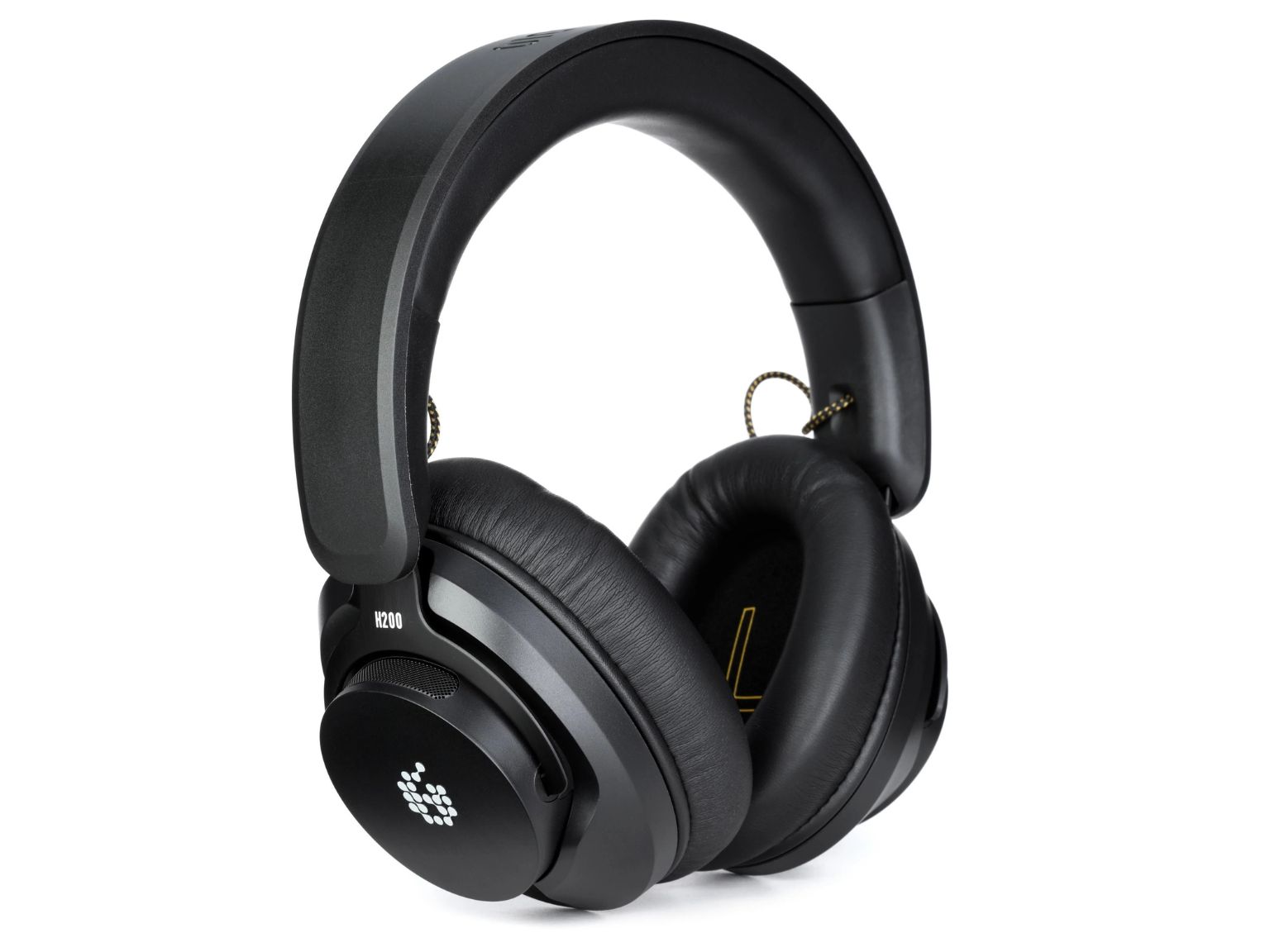
ADAM Audio H200 Headphones
Buy it new on Sweetwater, B&H, Thomann, or Amazon. Look for deals on Reverb.
My personal favorite headphones on this list are also the newest headphones on this list: The ADAM Audio H200.
Announced just a few months ago at the 2024 AES Convention, these headphones are a landmark evolution in affordable closed back headphone design.
They have everything I like in a good pair of recording headphones: Easy adjustability, durable construction from high quality materials, a lightweight and comfortable fit, easily sourced replacement parts for anything that’s likely to wear out or break, and a very reasonable price point for it all.
The H200 also have something that many closed back headphones can’t boast about: excellent sound quality, largely free of resonances in the bass, with marvelous low end extension, all the way down to 2 Hz. (Yes, you read that right: TWO HERTZ.)
This “semi-ported” design couples all the acoustic isolation of closed back headphones with some of the largely resonance-free performance and improved frequency response of open-back headphones.
These are the first major brand of pro headphones to incorporate this general concept into a closed back headphone since Blue’s Mix-Fi line, which was my favorite pick for accurate lows in closed back headphones prior to this. Unlike the Blue’s headphones however, the ADAM H200 are lightweight, comfortable, and have a more traditional and less-eyebrow raising visual aesthetic.
Improving on the package even more, the H200 come with some very simple bit effective software to flatten the frequency response of the headphones even further if desired.
The only reason I don’t feel comfortable making these new Berlin-designed headphones my definitive top pick for “best all around” is that they just haven’t been around long enough for us to have plenty of data and anecdotes from the field about how well they handle use and abuse over the years, and how much musicians like using them.
With that said, the build quality I feel on these headphones out of the box make me feel that the H200 are very likely to become the closed back headphones to beat from this date forward.
For my personal tastes, these are the only closed back headphones under $200 that I’d be willing to learn to mix on as well as record on.
While I still find open-back planar magnetic headphones much more optimal for mixing and mastering purposes, the ADAM H200 are some of the few inexpensive closed back headphones I’d trust to make some limited critical listening decisions on in the mix.
The only potential negatives are that some listeners may prefer a more hyped up sounding pair of headphones for recording purposes, and that they don’t fold up quite as compactly as some other models. For my tastes, neither is an issue.
Audio Technica ATH M50X — Winner: Best All Around ($149)
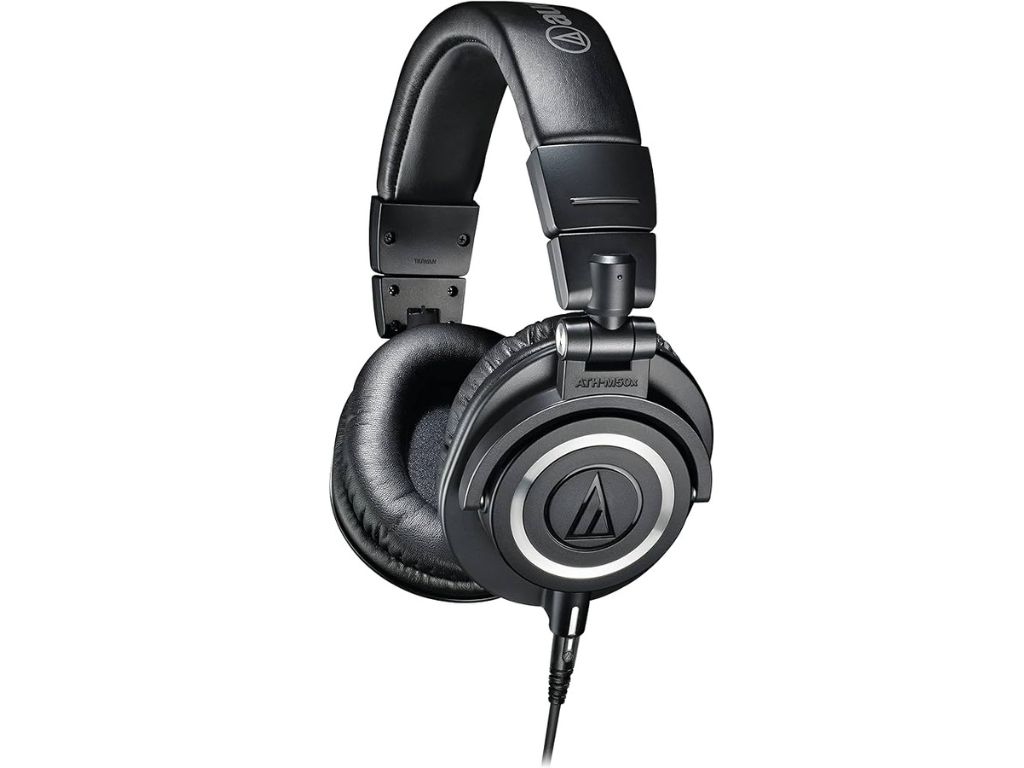
Audio-Technica ATH M50X Headphones [LINKS p=”Audio-Technica ATH M50 Headphones”
The Audio-Technica ATH M50X are some of the most popular closed-back professional headphones in the world for good reason.
Before the release of the ADAM H200, the M50X were clearly THE closed-back headphones to beat in the under $200 price bracket.
They offer the perfect balance of just about everything you need in a proper closed back headphone design: Good sound quality coupled with good isolation, durability and comfort, all at an affordable price for the level of truly pro quality on offer.
There are some headphones that might be even more durable, some that might have even more isolation, and some that might offer even more comfort… but Audio Technica have struck an amazing balance between all of these competing priorities in a way that is difficult to duplicate.
As far as sound quality, the flagship M50X headphones are… well… “FUN”. These are not neutral sounding headphones. Instead, they have a decidedly hyped-up sound, with a big booming low end, and soaring highs. The mids are smooth and quite flattering by being a little too “scooped out” for making great critical listening decisions.
However, this bug is also a feature: Unlike more neutral headphones, these hyped-up tracking headphones naturally impart the kind of EQ cruve one might want to apply in mixing, making raw basic tracks sound more “finished” and “exciting” right out of the gate. This will tend to lead to less than exciting sound mixes if you try to mix through them, but it can also lead to more inspired sounding performances, as the record already sounds more “finished” through them as you are tracking.
There are also substantially more affordable versions of this basic design, some well under $100. Some of the cheapest headphones in this line like the M30x and M20x lack a detachable cable, and so aren’t quite as repairable or durable as the higher end ATMs, but they cost considerably less if you’re just getting started.
However, less expensive doesn’t always mean “worse” in the ATH line. In fact, my preference is actually for the ATH-M40X which are only $99, but substantially outperform the ATH M50X in sound quality—in my opinion.
Relative to the M50X, the more affordable M40X at just $99 have a much more neutral and useful midrange, a more honest and less resonance low end, and a more accurate top end. The M40X are just “better” or at least “more objective” headphones for critical listening all around. But they might not be as much bombastic fun for tracking.
The M40X are also slightly less robust and durable than the M50X, as they are made more as personal reference or recording headphones or than as tanky studio headphones to hand over to random musicians.
If you are a self-producing artist who will take good care of your own gear, the less expensive M40X could actually be your better bet. They are a tremendous value, and a potential winner in the “Best Value” category, at least for personal use. The subtle decrease in robustness may be well worth it for the substantial improvement in frequency response and price.
If you want a tried and true modern classic that has stood the test of time in recent decades, it’s hard to go wrong with the ATH-M50X as your stock tracking headphones to hand over to your collaborators and artists. They are just a proven winner in this category.
I generally wouldn’t recommend the M50X for making critical mix decisions, though some regular users of this model do get to know them well enough that they swear by them as a secondary reference check. However, if that’s the goal, the M40X are probably better suited as a secondary reference.
The only minor quibble I have with this line is that the earcups are a bit smaller on the ATH than on the ADAM and Austrian Audio headphones, so they sit slightly more “on top” of the ears than “around the ears” for some users. However, this is more of a design difference than a design flaw, and some users may actually prefer this kind of fit.
Sennhesier HD 280 — Winner: Best Value; Winner: Most Robust ($99 and under)
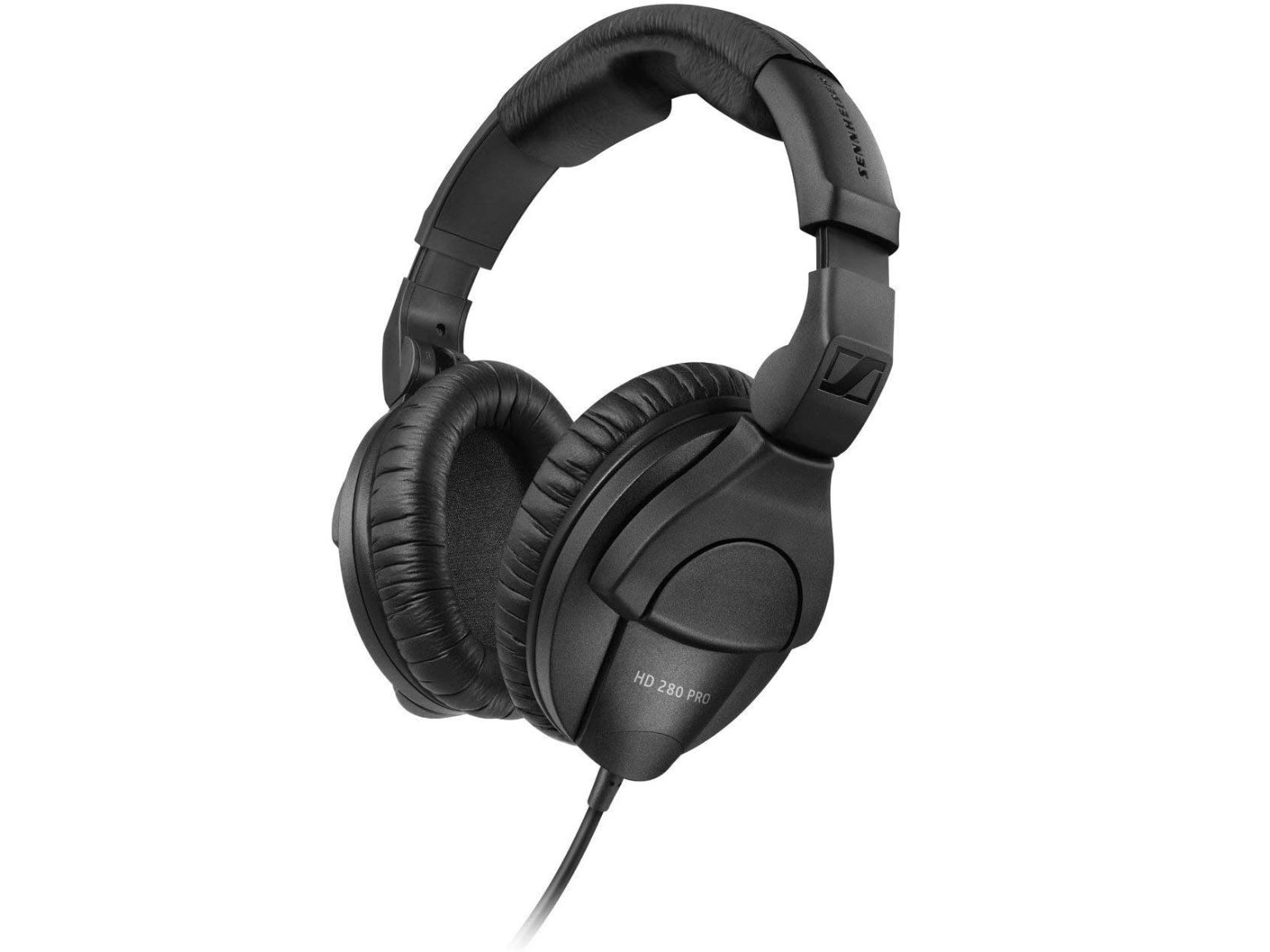
Sennheiser HD 280 Pro Headphones
Buy it new on Sweetwater, B&H, Thomann, or Amazon. Look for deals on Reverb.
If you are looking for truly reliable headphones under $100, it’s hard to beat the HD 280 Pro from Sennheiser.
These headphones are remarkably durable and offer great isolation at a very low price, making them a longstanding favorite for studios where full bands go to record.
If you need to buy multiple pairs of headphones, saving $50 or more per pair over the previously mentioned models can be a big deal.
There are only two minor knocks against these headphones that come along with the more affordable price.
First, in the durability department, the HD 280 lack a detachable cable, which is often a failure point for headphone breakage.
But with that being said, I’ve owned several pairs of these for decades and they have been continuously used and abused, and I have still NEVER seen the cable fail on any of the HD 280s that I own. The cable design and the reinforcement around the attachment makes them stand up for years in the face of even the worst abuse.
(I can’t say the same thing for my classic Sony and AKG headphones from 20 years ago, which have all experienced eventual cable breakage at some point over the years. Though to be fair, both brands have improved considerably on this front in design in more recent years.)
Secondly, these just aren’t my favorite sounding headphones. While I’m a BIG fan of the sound of the new open-back Sennheiser HD 490 Pro headphones, the more affordable HD 280 are a bit more… well, “utilitarian” sounding.
Compared to the more expensive options from ADAM and Audio-Techncia, the HD 280 sound a bit more “midrangey”. Perhaps a bit “boxier”, “honkier” or “nasal”.
The sound is by no means offensive, and it’s wonderful just how loud these headphones can go without ever damaging the drivers. Their focus on the midrange can really help musicians focus on what’s most important in their playing and the playing of others.
I would be hard-pressed to make good decisions about final tones and mix decisions in these headphones. They have neither the neutrality of ADAMs, nor the fun factor of the Audio Technicas. But what they lack in high-end sonics they more than make up for in affordability, durability, adjustability, comfort and isolation.
These are battle-tested headphones that are truly made to be used, abused and enjoyed by the musicians—the most important people in the studio. If you need a lot of headphones for a studio full of musicians, and you only want to have to but them once, these are one of the best options that exist.
Austrian Audio Hi-X20 — Runner Up: Best All Around; Winner: Best Hype/Neutrality Balance ($149)
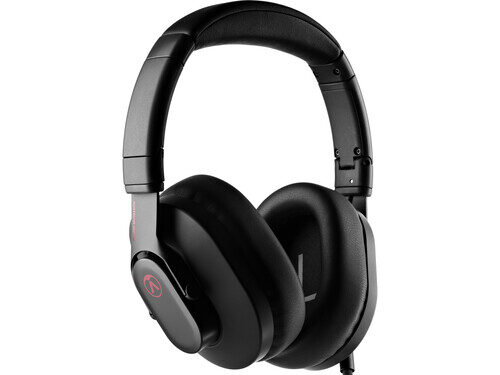
Austrian Audio Hi-x20
Buy it new on Sweetwater, B&H, Thomann, or Amazon. Look for deals on Reverb.
Austrian Audio are known for making some great higher end and mid priced headphones. Now, they’ve taken the same technology, design and build quality to a lower price point for the first time in the Hi-x15 and Hi-x20.
Like the new ADAM H200 headphones, the Hi-x20 are so new that there isn’t yet a great history for how they will stand up to years of abuse. But the way they handle and feel suggests that they could be a suitable model for any pro studio.
The Hi-x20 are $149 and stack up nicely to the ADAM Audio H200 and Audio-Technica ATH M50x. Sonically, they sit somewhere in between the sound of each, with a more hyped and scooped sound than the ADAMs, but a more flat and neutral response than the Audio Technica.
Their low end is big, but not as boomy and resonant as the ATH M50X, nor quite as flat and resonance free as the ADAM H200. it’s just a very nice balance between the “fun” factor of the ATH M50X and the potential usefulness for critical listening found in the H200.
They also have nice large earcups, far larger than those on the M50X and slightly larger than on the H200s, making them a better fit for a wider variety of ear sizes.
They have a promising less expensive model as well. Unlike the Sennheiser HD 280, the $109 Austrian Audio Hi-X15 does come with a detachable cable, eliminating that potential failure point. They look, feel and sound like a considerably higher end set of headphones than the Sennheiser for just $10 more, and I do prefer their sound.
The sound of Austrian Audio headphones is a bit unconventional to my ear. To some it is perfect, and to others, it’s more of an acquired taste. Austrian Audio is known for shooting for a different target curve than some of the other major brands, which gives them a slightly different sound than what some users are accustomed to. But with that said, the X20 is probably closest to the more “average” sound of headphones.
Across their line, the AA headphones tend to have have a bit more of a meaty, woody, “thwack” in the midrange. They’re never quite as scooped or bright or booming as some other models. However, since the X20 are probably their most “scooped” and “hyped” sounding headphones, that potential difference is far less noticeable.
Compared to the HD 280 they undoubtedly perform even “better” on sonics, and are even more sleek and stylish for a pretty comparable price. They are better suited for personal use, where the HD 280 may be a better pick for communal tracking headphones. And compared to the M50X, the x15 and the x20 are both just more neutral and potentially more useable in a pinch for critical listening.
I find these to be some of the more stylish headphones on this list, with a slim, sleek profile that looks good on camera, and just a touch of color in both models to spice things up a little bit.
Along with the HD 280 and M40X, the x15 stand out as some of the easiest headphones to recommend right around the $100 point, and the x20 are clearly some of the top contenders at $150.
The Austrians Audios may win slightly on style and sound for some, while the other brands may win just slightly on proven real-world reliability over time.
Who knows? The Austrian Audio could be just as durable over the decades, but we just don’t have that data yet. I’m curious to see if their cables and earpads hold up as well as some of the other longer running brands. Only time will tell, but the general reputation of the brand is quite promising on that front.
Beyerdynamic DT 770 Pro and DT 770 Pro X — Winner: Comfort and Fit ($149~$199)
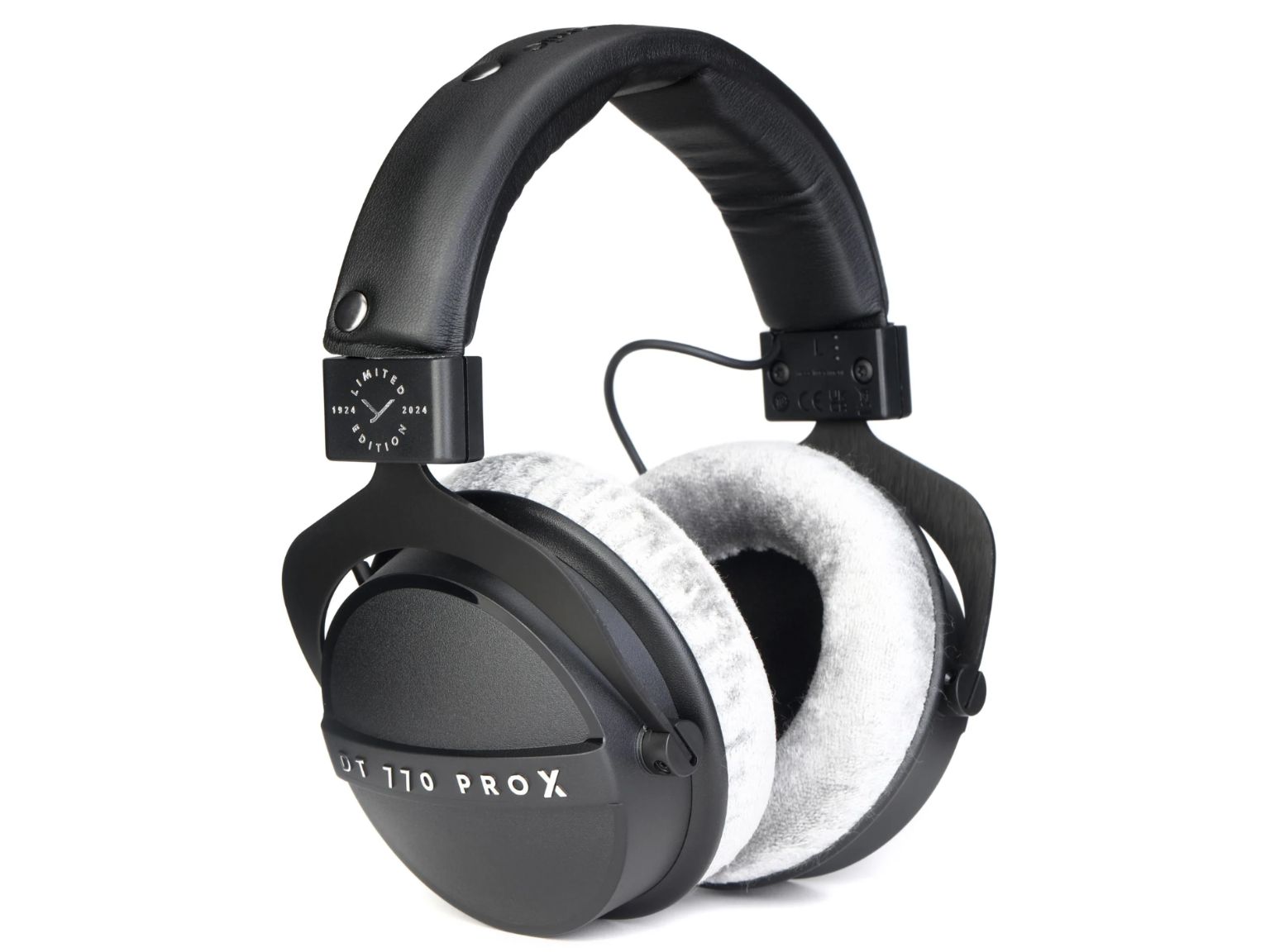
Beyerdynamic DT 770 Pro and Pro X
Buy it new on Sweetwater, B&H, Thomann, or Amazon. Look for deals on Reverb.
Once again, I have to commend Beyerdynamic for making some of the most comfortable, stylish and best-fitting headphones of their price point in the DT 770 Pro and 770 Pro X.
At every single price point where they compete, Beyerdynamic’s headphones just feel more like a “luxury” product than their competition.
I love the quality of the earpads, which are once again, some of the most comfortable to wear in glasses at their price point. They lack the excessive “pinch” of some other brands, while still staying on securely, and there is something that is kind of distinctive and “nerdy cool” about their hemispherical aesthetic. They make me feel feel like we’re about to go crate digging for some vinyl 12″ treasures from the 1970s while still feeling modern and contemporary.
The sound of the 770 line are mostly on par with their closest competitors, though I’d give the edge here to ADAM, followed by Audio Technica for my personal tastes.
Other listeners may feel differently, however: The 770 have a bit of the signature upper midrange/high frequency balance of other Beyerdynamic headphones, which their fans seem to love, coupled with a bit of extra “boom” in the low frequencies for this model to make them even more inspiring in tracking settings.
Some users have complained that the slightly exaggerated low end and top end compared to mids can make them a bit more fatiguing than other options over longer listening sessions, while fans of the line argue that they make music sound fun and satisfying to make. This particular model might not have the ideal frequency response for mixing headphones, but they be a potentially great option for recording.
If you’re a fan of Beyerdynamic, like the comfort, the aesthetic, or just want to give the line a try, the 770s are an affordable way to find out what all the hype is about.
Sony MDR-7506 — Winner: Time-Tested Classic Design ($99)
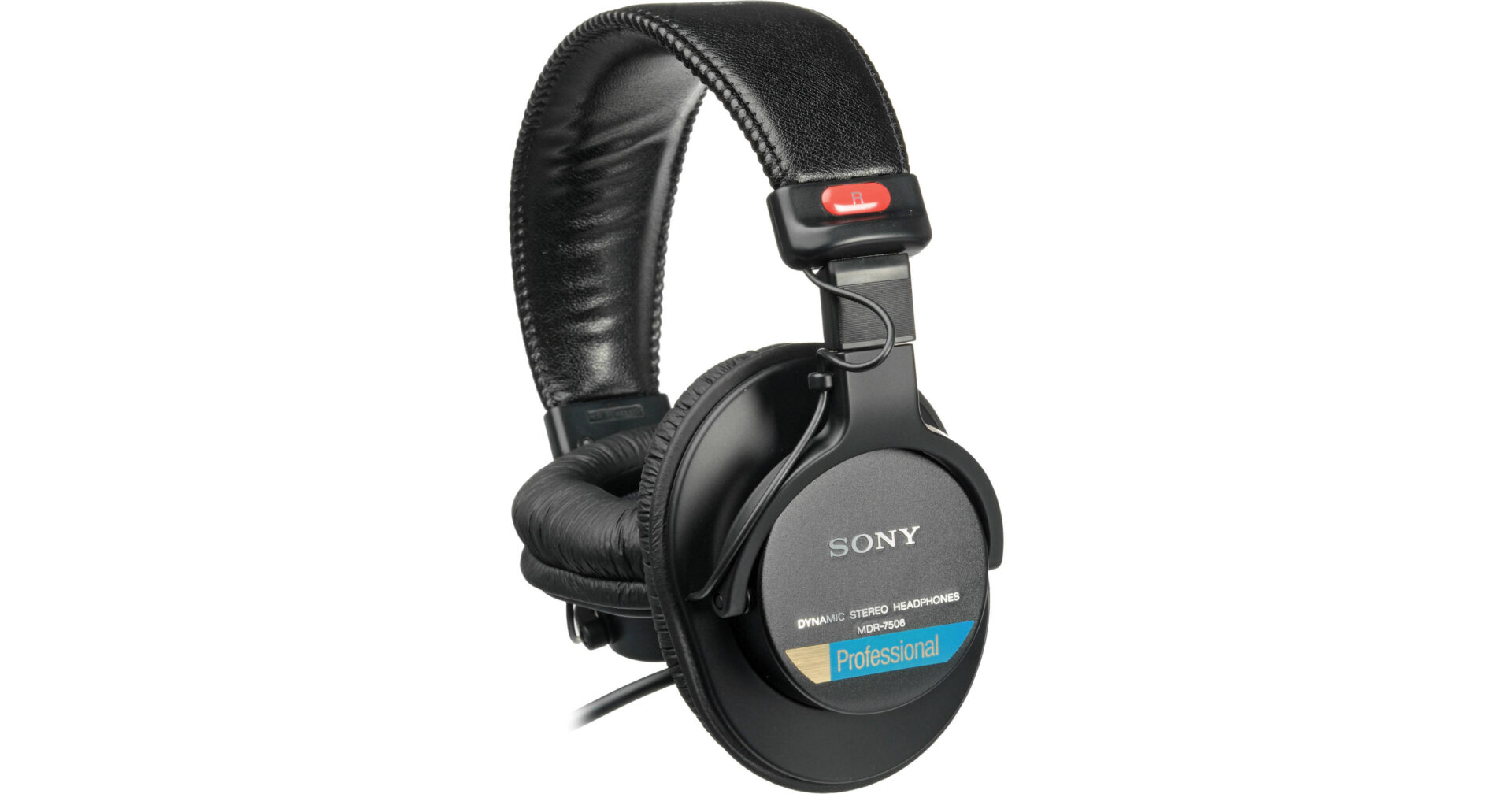
Sony MDR 7506 Headphones
Buy it new on Sweetwater, B&H, Thomann, or Amazon. Look for deals on Reverb.
Ah, the classic Sony MDR-7506. These are the headphones I love to hate, and that so many users hate to love!
Cutting edge and modern back in 1991, it’s a design that has been in constant production for more than 30 years and absolutely refuses to go away.
These headphones sell for $99 and sometimes less, and they have a very distinctive sound that some listeners have become quite accustomed to over the years.
They are bright, they are brash, they are hyped up and unapologetic about it, and some longtime music makers have listened to them for so long that they just seem “normal” to them now.
As impossible as it seems to me, multi-platinum mixer Andrew Schoeps was known for actually mixing in the these headphones for ages before upgrading to Audezes in more recent years.
These headphones aren’t particularly accurate to my ears, they don’t have ideal isolation compared to some models, and there are mixed opinions about how well they hold up over the decades, with flaking earpads and deteriorating drivers.
However, some of the reported durability concerns are probably due to the fact that so many of these headphones have been out in the wild for so song. There is simply a countless number of these headphones that have been in professional use in the field for 15, 20, 30 years or more without ever being retired.
Personally, I am on record as hating the sound of the MDR 7506, with their emphasis in the 2kHz-7kHz range, coupled with a lack of low end below 100Hz, which makes them sound even brighter, and the gentle “scooping” in the mids that make them feel overly “hyped” to my ears.
But despite my dislike for their sound, I have an odd respect for the the MDR 7506. Any headphone that has been that popular with so many people for so many years must have gotten something right—and with so many listeners!
This is where it’s worth repeating that taste in headphones is a very subjective area. You can use my notes as good context, and a jumping off point for exploring these models, but ultimately, you’ll want to hear and feel some of these for yourself.
Slate VSX Headphones — Runner Up: Best Value ($299)
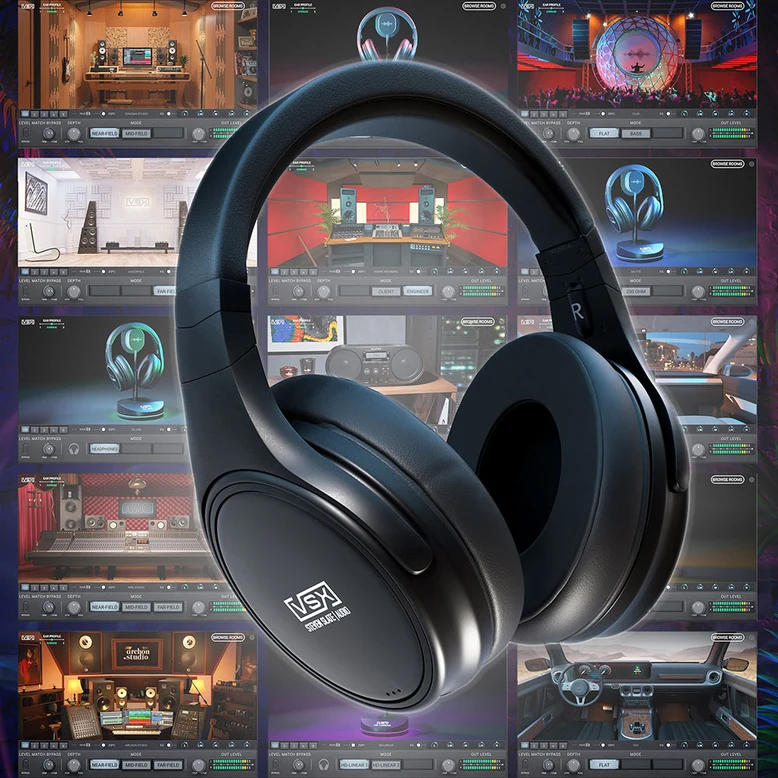
Slate VSX
Buy it new on Sweetwater, B&H, Thomann, or Amazon. Look for deals on Reverb.
I know I said up front that we’d focus on headphones under $200, but the Slate VSX headphones deserve a shoutout because they are unlike anything else on this list:
If you were going to buy a pair of closed back headphones for recording AND mixing, stop here, because you have found them.
Unlike just about anything else on this list, due to the included software, these are headphones that you can really mix in. Even simply using the “Flat” settings on these headphones make them into some of the best closed-back headphones for mixing ever created. As an added bonus, these headphones also emulate speakers and studio environments, making it easier to make panning and depth choices that will translate across systems.
While my preference is still for planar magnetic open-back headphones for mixing and mastering, I can’t deny that tons of people are putting out great sounding mixes with the Slate VSX headphones.
While these headphones are over our price limit at $300, I have to include them, because they could potentially serve two purposes at once: they could be your higher-end mixing headphones AND your less expensive tracking headphones in one.
One drawback of the Slate VSX headphones is that the included software does introduce some latency, which means they may not be suitable for recording, depending on your sensitivity to latency and the power of your system.
While some users report that the latency is negligible for their purposes when tracking, you always have the option of turning off the VSX software completely and just using them as raw headphones. They are still quite serviceable without the software, with surprisingly deep lows, and a bit of a dark top end when left un-corrected.
My only critique is that the amount of choice you have in the software is potentially overwhelming. It’s probably better to deeply learn 1 to 3 playback systems than the potentially dozen or more that you can have access to in this software.
I’m also not sure I’d love having a pair of headphones that was tethered to software, but it doesn’t seem to bother the countless lovers of this solution.
These are certainly some of the best closed back headphones available as we get into the $200 and up price point, but they are not without competition as we get into these higher price brackets.
There are some truly great closed back headphones at the higher prices from Audeze, Austrian Audio, Beyerdynamic and several others, but due to the scope of this article, we’ll have to leave them for another day.
Honorable Mentions
Two brands I was interested to try out, but who did not send samples for review, were AKG and Shure. Every other brand listed here quickly and cordially sent a demo unit for review purposes, which is always a promising sign.
I’ve owned many AKG headphones over the years, and tried many Shure headphones over the years, however. And, based on my experience, I have tended to prefer the models mentioned above in these price points—so I didn’t keep hounding either of these brands after they ignored my initial requests for demo units.
With that said, the AKG K371 for $179 (now $139) seem promising based on online ratings at retailers. I’d be interested to try them out. The AKG K72 and K92 seem interesting because of just how inexpensive they are, at close to $40 and $30 from a reputable headphone brand.
However, as an owner of AKG headphones in the past, I have found the cheaper AKG models without detachable cables to be some what fragile and prone to breakage at the cable connection, which makes me a little leery for the cheapest models. (It’s worth mentioning that Audio Technica also have similar models close to this price range.)
However, the highly rated AKG K371 gets around this issue by including a detachable cable, which are generally less easily broken and more easily replaced. I’d love to try some, but I’ve never heard back from the company, and don’t feel like continuing to chase them to get a demo pair for review.
I’ve used Shure SRH series headphones in the past and found them quite serviceable. Their higher end open-back SRH1840 headphones are among the better open back dynamic headphones out there. But at these price points, I have preferred other options.
The originally $99 SRH440A (now $79) aren’t as ubiquitous as the Sennheiser HD 280, possibly because the latter feel more robust, and tend to be a better and easier fit for many users. The originally $149 SRH880A (now $129) are outperformed in feel, fit and sound quality by the ADAM and Audio Technical options in my opinion.
With that said, after the recent price drops from AKG and Shure, their headphones could become more attractive to the value-conscious.
Also worthy of note is Heil who offer the well-rated Pro Set 3 for $129 and Hifiman who currently have their closed back Sundara on sale for $129—normally $499.
I wasn’t aware of the Heil before sitting down to write this article unfortunately, and the closed back Hifiman Sundara weren’t on my radar as their normal price is outside of our range for this piece.
Because the Hifiman Sundara are planar magnetic, they could be a great option at this price point. However, I don’t expect to see sub-$200 planar magnetic closed back headphones from a pro brand anytime soon. Currently, the closest thing is the Maxwell line from Audeze at $299, and I’m optimistic that they will have less expensive options before too long.
Final Thoughts
The best thing you can do is try some of these headphones out for yourself. I hope that at the very least, this list helps you narrow down your choices, and and provides some context for making your choices.
Justin Colletti is a mastering engineer, author and educator. He edits SonicScoop and hosts the SonicScoop Podcast. He is the creator of the full-length courses Mixing Breakthroughs and Mastering Demystified.
Please note: When you buy products through links on this page, we may earn an affiliate commission.






